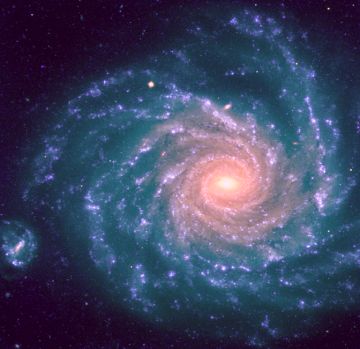
In the spring of 1949, Alfred Korzybski and his confidential secretary, student and colleague, Charlotte Schuchardt [later, Read] were in New York City, working to prepare the Second Edition of his first book Manhood of Humanity for publication, including preparing a new introduction, a piece of writing that Korzybski considered of extreme importance for conveying a proper understanding of his entire body of work. The notion of time-binding, brought forth in Manhood, had become more significant to him in the last few years, and he sought more than ever now to show how his subsequent work came out of that foundational formulation.
In April before tackling the introduction (he had already written several drafts over the last year), he and Charlotte were preparing new appendices, making corrections, choosing paper, etc. for the printer. And Alfred was putting the finishing touches on a piece he had written the year before, his 'Credo', "What I Believe," which he had written for an Indian anthology, and which he planned to use as Appendix VI in the new edition.
How did Korzybski work? Through reading and research—including self-observation, he had developed an understanding of the role of unconscious processes in creation and discovery, which he consciously applied to his own creative work. His process of writing usually involved a lot of preliminary out-loud formulating, spitting things out in writing, and multiple rounds of editing, re-writing and that ‘g-d de-lousing’ (close proof-reading to correct spelling, grammar, typos, etc.). During any part of this process—even after mostly completing a piece of work—he might return to talking out various issues in order to refine what he wanted to say. And he preferred to have someone to talk things out to. During the writing of Manhood of Humanity and Science and Sanity, his wife Mira had fulfilled that role, which had long since descended onto Charlotte—Korzybski’s amanuensis. His formulating might lead into areas that would never reached print; although some interesting digressions could also lead to new and important insights to bring out. As she took dictation, part of Charlotte’s job involved helping Alfred to corral his ‘thoughts’ with queries, questions, and doubts.
Whether they reached print or not, her notes from these sessions—which Charlotte would sometimes type up from the penciled, partly-shorthand dictations she had taken—reveal some interesting formulational byways. On April 17, while they were finishing up work on the ‘Credo’, Alfred talked about matters of religion and cosmology. Charlotte took notes. His 'thoughts' although in need of further development, remain suggestive. :
AK: 4/17/49 re. CredoNotes
Re.: We being the ‘builders of our own destinies’.
Suppose we do discover some day an ‘almighty’. Still it will remain our knowledge of it, never it. By understanding that ‘eventual’ ‘almighty’ we will be able to adjust ourselves to ‘him’ (we shouldn’t say ‘him’). We have to adjust ourselves to the conditions at hand.
The essence of our knowledge depends on self-reflexiveness. Cannot avoid it. The secret of humanity is connected with the nebula, cosmic dust, the character of which is not known.
We learn from astronomers that there are inter-stellar dark bodies. Assumption is they are ‘cosmic dust’. Personally I believe that as we are made of atoms, bombarded all the time by cosmic rays, and what not, the supreme mystery, beyond our understanding, is the structure of the atom. The whole trick about humanity and life is self-reflexive, is a higher order structure.
The secret of life and the universe and humanity is the secret of the atom. Humans are the end product of that extremely complex organization.
Why should there be spiral nebulae?
We record the end process of living because we feel it.
We have to forget anthropomorphisms. So far religions built in the image of man. We are a tiny bit of sensitive combination of atoms.
We are accustomed to the nearest milky way, which has a definite shape for millenniums. A spiral nebula is an incredible freak (of course it cannot be a freak). Far as we know, there are a great many universes, and the other universes have approximately the structure of our solar system.
A ‘supreme power’ is there – no two two’s about it. But we don’t know the character.
We can only discover the structure, never the it.
The statement: ‘Has the universe a purpose?’ is anthropomorphic. The only thing we can say is it ‘was, is, and will be’. We are still too anthropomorphic. To answer that this universe is finite or infinite – neither makes sense. I would say, ‘stop talking non-sense’.
For example, you will never discover in actuality 3.1415…….
The calendar business [they had recently had a visit from Elizabeth Acheilis, a wealthy lady whom Mira had years before become friendly with and done a portrait of, who had dedicated her life and fortune to world calendar reform]: nothing is regular, there are cycles in this world where length of days, months or years – theoretically the calendar is never permanent.
There is no explanation of how this world could happen. Whatever you say, it makes not sense.
The first thing is to formulate the question so that the question would make sense.
It may be, life is as old as the solar system and the universe. This looks definitely reasonable. Viruses – life, not life – coming in cosmic rays. I cannot imagine this universe devoid of life. Life happened to be a rather rare phenomena. But the viruses – to me this world was, is and will be, life is bound to have happened an infinite number of times. Where life dropped – in favorable or unfavorable conditions. Random. This applies the theory of evolution to the universe.
Eternal transformation solidified stars. Collisions. We know from astronomy. Life must have existed. We cannot imagine the beginning or the end. (1)
(1). [Notes of 4/17/1949 taken by Charlotte Schuchardt. "AK- Re.: We being the 'builders of our own destinies'." IGS Archives.]
No comments:
Post a Comment